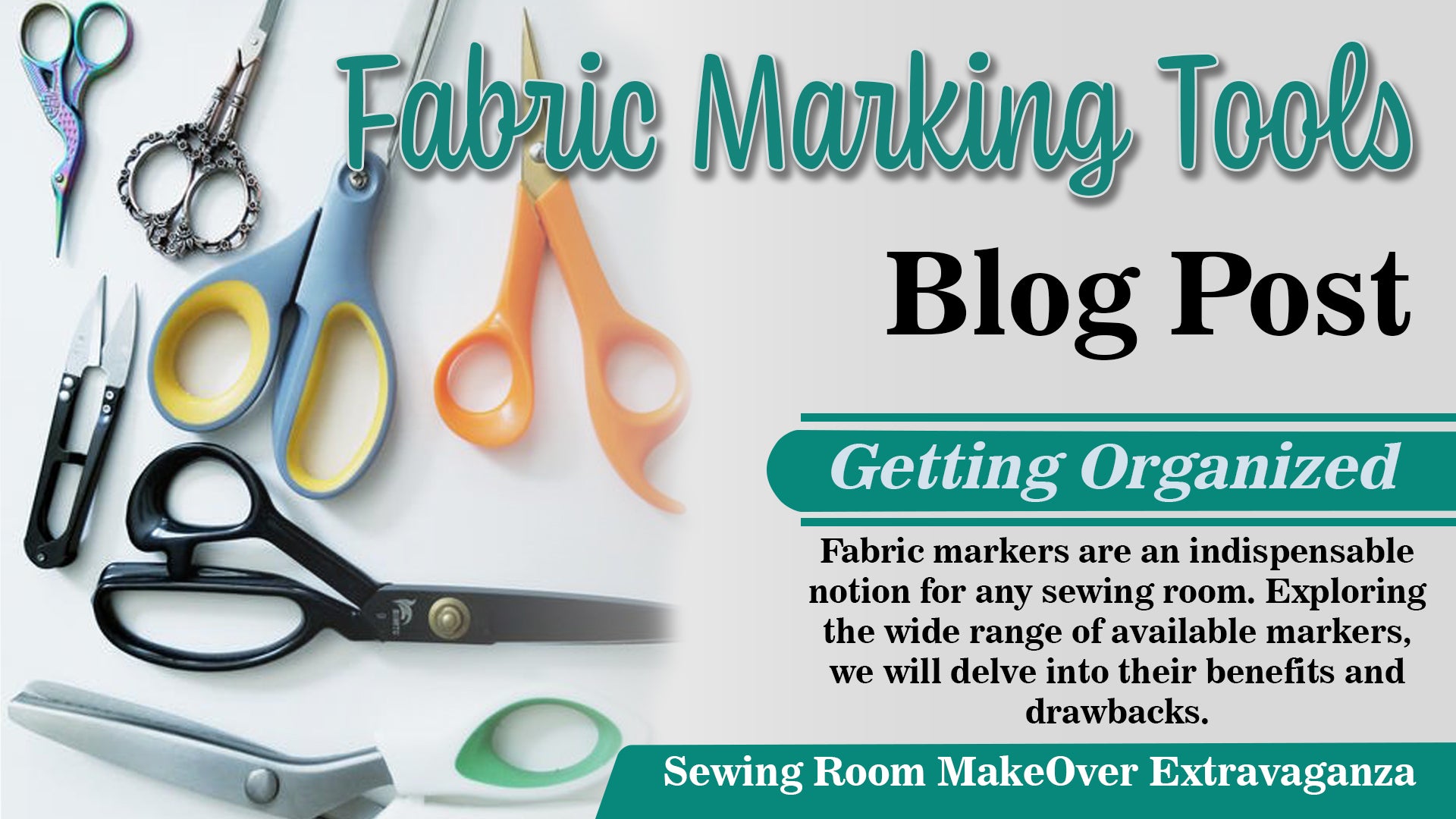Welcome to the fabulous world of sewing tools! In this thrilling adventure, we'll dive headfirst into the enchanting realm of rotary cutters, scissors, and other magnificent cutting tools that reside in our marvelous sewing room. Prepare to embark on a whimsical journey as we unravel the secrets of each tool and discover their unique purposes. Are you ready? Let's embark on this exhilarating blog post and let the exploration begin!
First lets see what options are available and a short description of each
Rotary Cutter: This versatile tool with a circular blade is perfect for swiftly cutting long, straight lines of fabric or multiple layers at once. Ideal for quilting, patchwork, and general fabric cutting. Gives precision cut lines which is not always possible with scissors.

Pinking Shears: These special scissors create zigzag edges on fabric, preventing fraying and adding a decorative touch. They are excellent for finishing seams and creating unique fabric edges. Especially on key fobs they give a nice decorative edge, you get the zigzag or scallop edge type.

Dressmaker's Shears: These long-bladed scissors are a must-have for cutting fabric with precision. Perfect for cutting patterns, garments, and trimming excess fabric. Scissors with different blade length are available, so you can choose what you are comfortable using.

Embroidery Scissors: These petite scissors have sharp, pointed tips, making them ideal for intricate tasks such as trimming threads, snipping embroidery stitches, or cutting appliqués. There are quite a variety available, some with a flange for applique, some with a curved handle, some with curved blades.

Seam Ripper: The trusty seam ripper comes to the rescue when mistakes happen. It effortlessly removes unwanted stitches, allowing you to rectify errors and achieve sewing perfection. Open button holes and other areas for threading ribbon through or eyelets.

Appliqué Scissors: These scissors feature a curved or angled blade, allowing for precise trimming and cutting around intricate shapes and curves, especially when working on appliqué projects.

Electric Fabric Cutter: This modern cutting tool is an absolute time-saver. With its electric-powered blade, it glides through layers of fabric effortlessly, making it perfect for larger cutting projects.


Thread Snips: These small scissors are designed for precisely cutting threads close to the fabric surface. They are ideal for quick snipping tasks during sewing or embroidery.

With these fantastic fabric cutting tools at your disposal, you're equipped to tackle any sewing project with ease and creativity. Let the adventure continue as you explore the endless possibilities of these marvelous tools! But ok lets look at how do we store our scissors ?
Scissor Block or Holder: A scissor block or holder is a popular option for storing multiple pairs of scissors. It typically has slots or compartments of varying sizes to accommodate different scissor types, such as dressmaker's shears, embroidery scissors, and pinking shears. This allows you to keep them organized and easily accessible on your sewing table or countertop.

Magnetic Strip: A magnetic strip or bar is a practical storage solution for metallic scissors. Simply mount the strip on a wall or the side of your sewing table, and the magnetic surface will securely hold your scissors in place. This method is particularly useful for smaller scissors like embroidery or thread snips.

Scissor Case or Pouch: A scissor case or pouch is a portable storage option that provides individual compartments for different types of scissors. It allows you to keep your scissors protected and organized while on the go. Choose a case with divided sections or elastic loops to prevent the scissors from tangling or getting damaged. In fact, lets see about making this a future in the hoop project !

Hanging Hooks or Clips: Utilizing hanging hooks or clips is a space-saving method for storing scissors. You can attach adhesive hooks or clips to the inside of a cabinet door or on a pegboard, and hang the scissors by their handles. This works well for various scissor types, especially smaller ones like embroidery scissors or thread snips.

Drawer Organizer: Using a drawer organizer with compartments or dividers is an effective way to store and protect scissors. Assign specific compartments for different types of scissors to keep them separated and prevent damage. This method works well for larger scissors like dressmaker's shears and rotary cutters.

I personally have a magnetic bowl used more for screws etc in electric / workshops. which sits on my table with my most used embroidery scissors and tweezers in. The larger scissors I have in a drawer close to my cutting table.

In our next installment of Getting Organized, we will discuss, bobbins and pre-wound bobbins, different types and how to store these without the thread unravelling.










1 commentaire
Terry
I’m interested in sharpening scissors. I live in a country town & haven’t found anywhere yet that sharpens scissors. Have looked on line for scissor sharpening tools but only seem to get tips e..g cutting through aluminium foil which does work but would like to be able to get them sharpened properly.